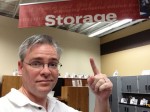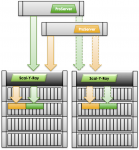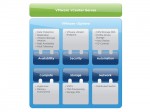Everyone is talking about “software-defined†everything lately, so it was only a matter of time before industry buzz turned to software-defined storage. VMware and EMC really stoked the flames with a constant barrage of marketing directed in this direction. But how exactly do you software-define storage? And what does this mean?
Hyper-V
Scaling Storage At The Client
Scaling storage is a serious challenge for the industry, but there is a great deal of thought, effort, and creativity going into it right now. Companies like Gridstore, Oxygen Cloud, and Cleversafe have come up with effective client-side solutions to enable scale-out storage to sing. If you’ve got an appropriate application, client, or gateway, scale-out is a real possibility!
Samba 4.0 is Released with Full Active Directory and Updated SMB Support
Samba is becoming more and more important. Windows servers will increasingly use SMB 3.0 as their networked storage protocol in Windows Server 2012 and Hyper-V 3. And EMC’s purchase of Likewise means the rest of the storage industry is looking for an SMB stack. But I’m most interested to see what Active Directory support means for future home and business devices.
Sub-Standard Deployments: VMware’s Achilles Heel
Open up VMware vSphere with a high-end license and you’ve got the best product on the market, and the VMware ecosystem is where all the coolest stuff happens. But less-demanding customers are increasingly turning to alternative offerings from Microsoft, Citrix, and others.
Storage Changes in VMware vSphere 5.1
As I have done since version 3.5, I’m charting the storage changes in VMware’s latest release of vSphere, 5.1. Unlike version 5, which included many new technical storage features, 5.1 mainly tweaks existing features and adds these new elements to the mix.



